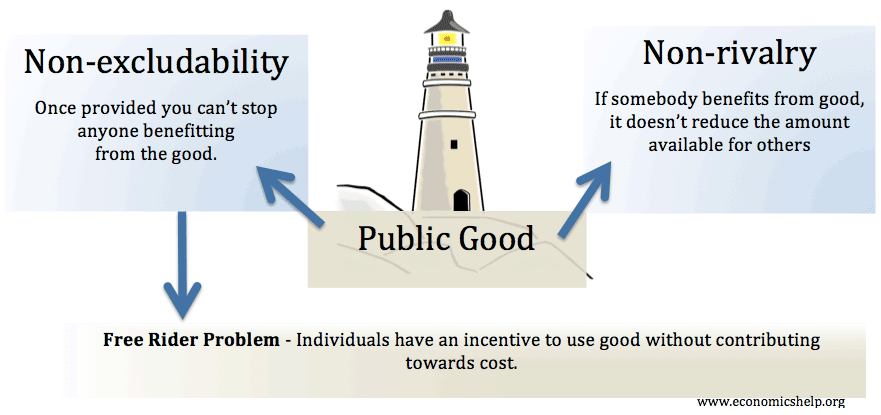
A public good is often (though not always) under-provided in a free market because its characteristics of non-rivalry and non-excludability mean there is an incentive not to pay. In a free market, firms may not provide the good as they have difficulty charging people for their use.

The problem with public goods is that they have a free-rider problem. This means that it is not possible to prevent anyone from enjoying a good, once it has been provided. Therefore there is no incentive for people to pay for the good because they can consume it without paying for it.

Both a public bridge and street lighting exhibit characteristics of a public good.
These are goods which have an element of non-excludability and non-rivalry. Roads are a good example. Once provided most people can use them, for example, those who have a driving licence. However, when you use a road, the amount others can benefit is reduced to some extent, because there will be increased congestion.
Although classical economic theory suggests public goods will not be provided by a free market, there are cases when groups of individuals can come together to voluntarily provide public goods.
Behavioural economics suggests that individuals can have motivations other than just money. People may volunteer to contribute to local flood defences out of a sense of civic pride, peer pressure or genuine altruism. Therefore, in the real world, enough people may contribute to paying for a public good, even if – from a narrow self-interest point of view – it may be rational to avoid paying.
Examples of market provision of public goods include:
Difference between public spending and public goods
One possible area of confusion. We talk about public spending. This is spending done by the government. E.g. UK public spending
However, not all government (public) spending is on ‘public goods’, e.g. the government will also spend on other goods and services, .e.g. – merit goods, like education and healthcare.
Related